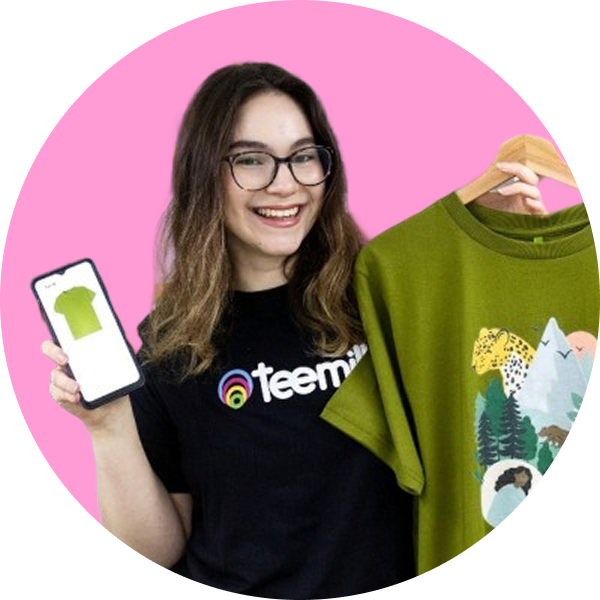Every year, we say “this Black Friday will be different,” but 2025 truly feels like a new chapter.
New tools, smarter technologies, and richer content experiences have transformed how brands connect with their audiences. They’ve opened exciting possibilities while also introducing new challenges. The playbook isn’t gone; it’s just evolving.
Today, content is no longer a side element of commerce, instead it is the experience. From the first moment of inspiration to the final tap to purchase, stories, videos, and conversations shape every step of the journey. And consumers expect these experiences to feel personal, seamless, and authentic across every touchpoint.
So, as we started thinking about this year’s BFCM, one question kept coming up in every conversation with our partners: What actually moves the needle anymore?
That’s how this project was born. Instead of guessing, we asked 38 brilliant minds across eCommerce, growth, and technology to share how they’re approaching this year’s biggest retail moment. And we didn’t want surface-level predictions. We wanted real perspectives about bold moves, strategic choices, and how AI is reshaping the work behind the scenes.
Because the truth is, BFCM isn’t just a weekend of price drops anymore. It’s a reflection of how ready we are for a new era of commerce.
And these insights are highlights of an industry that’s redefining what it means to inspire, connect, delight and repeat.
So, here’s to making this BFCM not just bigger, but better.
Enjoy.
Question 1: What’s one bold move or experiment you're planning for / you're recommending to your clients for BFCM this year - and what inspired it?
Chloë Thomas - Host of the eCommerce MasterPlan Podcast
Follow Chloë Thomas on LinkedIn

Find some blue water to play in. Find the marketing channels where the competition levels are lower - so you’ll get a better ROI.
Fighting it out in Meta Ads or Google Ads or TikTok Ads is a fool's game around Black Friday.
Instead, use the marketing channels where there are tried and tested eCommerce marketing playbooks, but which the majority ignore. I’m talking about… Direct Mail (cold and house list), Podcast Advertising, Pinterest, Parcel Insert Swaps, Off the page advertising in print.
Each of these channels have been proven time and time again to deliver great results for retailers, so there’s a playbook you can follow to maximise your chances of success.
Plus, one of the best times to test ‘new’ marketing channels is when buyer intent is high, and it’s never higher than the end of November!
Putting 10-20% of your Black Friday marketing budget (time and money) into tests is a great way to invest in improving your marketing for the next 12 months.
Mac King, CRO and Co-Founder of Domaine
Follow Mac King on LinkedIn

This year, we are encouraging brands to approach BFCM as the beginning of a long-term customer relationship rather than a short-term revenue spike. That shift begins before the sale ever goes live. The focus is on identifying high-intent segments, re-engaging quieter audiences through targeted flows, and building momentum well ahead of Cyber Week. During the event, campaigns should respond to real-time behavior, with tailored messaging for buyers, browsers, and inactive users, followed by post-purchase experiences that drive retention. The brands seeing the strongest results are aligning CRM, creative, and performance to create a full funnel journey that extends into Q1. Loyalty and lifetime value are not outcomes of a good campaign. They are the strategy."
Marty Bauer, Ecommerce Expert at Omnisend
Follow Marty Bauer on LinkedIn

This year, I’d start sales early – even before November – and keep them going for a few weeks. Shoppers are buying earlier every year, so waiting for a single weekend event might mean you’re missing out on opportunities to segment audiences, personalize messaging, and test what works before the busiest shopping days. Instead of overwhelming customers with a one‑day sales blitz, you’re gradually building excitement, nurturing repeat engagement, and ultimately capturing a higher share of wallet.
Päivi Korvela, Silta Social, Official TikTok Shop Partner Agency - CEO & Founder
Follow Päivi Korvela on LinkedIn

What would be better timing to go crazy with livestreaming than Black Friday! I will ask all my clients to do 12 hour Mega TikTok Shop livestreams on multiple days during Black Friday period. Live streaming is such an amazing way to convert shoppers and engage with them, and BF adds extra layer on top of that. On BF, you can just have so much fun there with a large audience who really wants to buy. So plan carefully, throw in your best offers, do BF special packages and bundles that will be sold only during lives. Do plenty of teasing on the weeks before BF to build a proper hype. Go crazy with prizes as well to keep lives entertaining and what are the special gifts for your brand on BF? But most importantly, just go Live and SELL and have fun.
Danil Saliukov, CEO & Co-Founder - Insense
Follow Danil Saliukov on LinkedIn

Maximizing BFCM Success with UGC, Partnership Ads, and AI-Driven Strategies
We would highly recommend working with influencers with proven UGC skills, producing modular UGC, post-producing a few variations and running it in ads. Once you see the performance, request Partnership Ads from them on an account level, allowing you to run multiple Ad Creatives with different hooks. It creates one more multiplier on your efforts where all heavy-lifting is already done: work with creators on getting content done. Moreover, Meta will start using influencer account data signals to optimize performance.
We believe that BFCM is for executing strategies that already work for you, but on a larger scale. The benefit of partnership ads is that they are a small addition to the UGC angle. So if UGC works for you, go for it. Also, bundles with great offerings can attract a new audience.
Speaking of AI in BFCM preparations, there are many ways of getting insights on how your customers talk about your product and the pain points/advantages it delivers. Take those and analyze with ChatGPT to shape creative briefs.
Victor André Enselmann, Founder - Modeva
Follow Victor André Enselmann on LinkedIn

This year, one bold move I’m recommending to clients for BFCM is turning their loyalty program into the campaign itself. Instead of deep one-off discounts, we’re encouraging brands to offer exclusive early access, stackable perks, and limited-edition bundles to existing customers only - essentially rewarding loyalty during the highest competition period. What inspired this was a trend we saw across multiple e-commerce clients in 2024: new customers came in for the discount and churned quickly. But when we centered campaigns around retention-first mechanics, not only did average order value went up, but reorders came faster. It also allows us to segment the campaign experience far more creatively - your best customers don’t need to see the same urgency ads as cold traffic. This shift makes your BFCM more sustainable long term, while still driving record-breaking short-term revenue.
Forrest Webber, Owner of The Trade Table
Follow Forrest Webber on LinkedIn

This year, we're trying something different. Instead of starting BFCM with a big public launch, we’re giving our most loyal customers early access to the deals before anyone else sees them. These are the folks who open our emails, buy without waiting for a sale, and keep coming back. What inspired it is how often brands focus so much on new customers that they forget about the ones who are already showing up. We want to change that. Giving loyal customers a head start is our way of saying thank you, and it also helps us get a better read on what’s going to sell before the big wave hits. It’s a simple move, but we think it’ll go a long way in building real trust.
Taylan Kaymakcı, Head of Marketing & Growth - Craftgate
Follow Taylan Kaymakcı on LinkedIn

This BFCM, my bold move is to put payment orchestration at the center of growth. Ahead of peak, we enable Craftgate Autopilot so checkout keeps accepting payments even if an acquirer, PSP, or e-money provider blips, removing single-provider risk when demand spikes.
We pair that resilience with Craftgate’s Smart & Dynamic Payment Routing, selecting the best provider for each attempt by BIN/issuer, method and cost, so approval-adjusted GMV(Gross Merchandise Volume/Value) rises while fees per successful order stay in check. To recover avoidable declines, we switch on Smart Retry that automatically resubmits soft declines under safer rails.
The final shot is tokenization (closed-loop card storage) in Craftgate’s provider-agnostic vault: customers can check out in one tap, come back after the weekend without re-entering details, and we avoid PSP lock-in. We complement this with more choice at checkout; installments, local wallets, and pay-by-link/QR, through a single integration and dashboard.
The inspiration is simple: every BFCM, merchants lose outsized revenue to downtime and issuer quirks. Orchestration: “failover + smart routing + retries + tokens” turns that fragility into incremental sales and long-term loyalty.
Matheus Baldo Cordeiro, Head de Marketing - Treble.ai
Follow Matheus Baldo Cordeiro on LinkedIn

We are recommending to our clients to "anticipate" Black Friday with personalized conversations via WhatsApp weeks before the campaign officially begins. This will allow us to identify and direct more efforts towards the most engaged customers, creating exclusive journeys for them, with early access to promotions, virtual shopping assistants, and triggers well-aligned with each individual's behavior.
The goal is to transform WhatsApp into a channel for massive campaigns that are, at the same time, individualized for each client. This approach was inspired by two things.
1: In recent years, we have seen that consumer behavior is more planned. People are deciding what they will buy on Black Friday in advance.
2: The excellent results our clients obtained in Black Friday campaigns over the last two years, with conversion rates up to 4x higher than in emails and paid media, in addition to returns that exceeded campaign costs by more than 10x.
Anh Vu-Lieberman - Head of Commerce as a Service - Cart.com
Follow Anh Vu-Lieberman on LinkedIn

This BFCM, I’m telling brands to stop marketing only to their ideal customer profile and start focusing just as much on their actual customer profile. They’re often not the same, and knowing the difference is where the real revenue is.
Too many brands push the same message and creative everywhere, assuming it works across all channels. But your Meta audience isn’t your TikTok audience. The way they watch, scroll, and decide to buy is different. A Meta video ad dropped into TikTok won’t perform the same, it feels out of place and gets skipped.
The bold move is to tailor both your messaging and creative to match each platform’s audience, behavior, and culture. This isn’t about making more content for the sake of it. It’s about making better content that connects. The inspiration came from watching brands leave money on the table by speaking to who they want their customer to be instead of the one already buying.
What inspired it is that we see the same mistakes for video content on TikTok. Brands are using their Meta video. As for the ideal vs actual, this was a request from our brand be where the vendor/manufacturer asked the question "Who is my customer?"
Fabricio Lösch, CCO and Co-founder at Kobe Apps
Follow Fabricio Lösch on LinkedIn
Kobe stands out for delivering one of the consumers' preferred channels during the period, the mobile application. For this reason, we carry out incentive actions so that our customers take 100% advantage of the platform to convert more and retain their consumers post-Black Friday. This is done through manuals, e-marketing communications, webinars, and even trial actions.

James Gurd - eCommerce Consultant at Digital Juggler & Co-founder of the Inside Commerce Podcast
Follow James Gurd on LinkedIn

For community-focused & ethical brands, focusing BFCM on investing in values not discounts, for example making donations to Charity/not for profits that they support with each order placed, so the brand & the customer are both contributing to something positive. You can model the expected order volume, then calculate a realistic per order donation based on the discount value you'd usually offer.
This isn't all or nothing either. It can be blended, for example if you usually offer 25% off everything, drop this to 15% and then use the 10% as a donation fund. The most important thing is to be bold, communicate clearly and explain the benefit to the customer - let them know what they're helping fund.
Brands like Rei and Patagonia are great examples.
İbrahim Gelmiş, Growth Manager - CR Wizard
Follow İbrahim Gelmiş on LinkedIn

Brands always want to improve, but there’s no single “magic move” for BFCM. That’s why we recommend scaling through data, not gut feeling. The first thing a customer sees is the campaign visual—so it should carry the brand’s soul, campaign details, and product details. But combining these elements isn’t enough. You also need to A/B test them to see what really attracts your customers. Doing this manually, especially for all products in a campaign, can be frustrating and slow. That’s why we suggest automating it—merging product feeds with dynamic design templates so every creative updates instantly. This way, you get clear data on which visuals your customers engage with most, and which campaign strategies resonate, whether it’s “Buy 3, Pay for 2,” “20% off,” basket discounts, or something else entirely. This approach was inspired by our collaboration with Decathlon, where we explored how campaign visuals can be more meaningful for both the brand and the customer.
Question 2 What will win BFCM 2025 - experience, lower price, superior product, long-lasting loyalty or something else entirely?
Sarah Penny, Content & Research Director, The Influencer Group
Follow Sarah Penny on LinkedIn

What will win BFCM 2025 completely depends on the product and audience and is really difficult to segment just one. In everyday marketing, at the heart of any brand is a product and if you have a high quality, superior product that people love, it definitely makes a marketer’s life easier.
However, we are still operating in a time of high living costs, and particularly in a time renowned for discounted activity, BFCM is the time to discount, particularly as consumers have become so accustomed to heavy discounts through models such as TikTok shop so I do wonder if we are getting close to the edge of the cliff face, especially now that it is accepted as a year-round model.
This, coupled with a rising anti-consumerist sentiment with social movements that we’ve seen such as de-influencing could see a shift towards more conscious consumerism.
However, I think it’s far more complex than one or the other and brands really need to not think about consumers as homogenous, there are different demographics with different values and buying intentions within these demographics. So play to what aligns best with you as a brand, rather than jumping on a bandwagon for the sake of a quick sale.
George Whitmore, Senior Affiliate Account Manager - Vervaunt
Follow George Whitmore on LinkedIn

BFCM is noisy. Whilst short-term discounts will always win attention, the brands that cut through the noise treat BFCM as the culmination of a year-long, full-funnel strategy.
Start the conversation early with affiliates who can tell the story of the brand. Through top-of-funnel activity, you can build both product and brand awareness before you begin your deepest discounting phase.
Give your content partners the creative freedom and assets they need, so your intended audience is reached as effectively as possible. Combining top-of-funnel activity whilst offering affiliate-exclusive bundles or promos further down the funnel rewards your top performing publishers for driving increased performance, which can lead to more
profitable relationships over time.
Sometimes overlooked, keeping newly-won customers engaged after BFCM is also important. It is imperative to keep feeding the narrative with follow-up content and further strategic incentives, turning transactional shoppers into repeat buyers. Short-term discounting may grab revenue, but it is long-term storytelling that keeps winning beyond the cyber period.
Rebecca Worsley, Founder and Director - Rainy City Agency
Follow Rebecca Worsley on LinkedIn

For BFCM 2025, experience will be the biggest differentiator, specifically creating frictionless, personalised journeys across every touchpoint. Discounts alone are easy to match, and products can be copied, but a seamless, story-led shopping experience that makes customers feel seen is harder to replicate. That means investing in segmented storytelling, interactive content, and AI-powered recommendations, for example:
- Driving traffic - Use paid social countdown ads, influencer unboxings, or a teaser series to build hype in the week before. Partner with complementary brands for cross-promos that send warm traffic to your site.
- First-time visitors - Hook them with a hero product spotlight and a short brand intro video, offer a “BFCM-only” bundle, or capture email/SMS sign-ups with a bonus perk.
- Repeat customers - Give early access to drops, or personalised offers based on past purchases.
Pair all that with a fast, mobile-first store and clear delivery expectations, and you’ve got a brand customers will remember long after BFCM ends. At Rainy City, we’re encouraging brands to think of BFCM not as a single conversion spike, but as the moment you earn trust that pays off all year round.
Melike Ulaman, Growth Marketer - Prisync
Follow Melike Ulama on LinkedIn

In BFCM 2025, as always, pricing will be the ultimate game-changer. With so many tabs open and shoppers comparing every detail, your price is still the first thing that speaks—and the loudest. Experience and loyalty matter, yes—but if your price isn’t competitive at that exact moment, you’re out of the race. What’s different now is that “competitive” doesn’t mean “lowest.” It means smart: adjusting in real time based on what your competitors are doing, your inventory levels, and your margins. Retailers who treat pricing as a living, breathing strategy—rather than a last-minute markdown—will win this BFCM. That’s why we’re doubling down on dynamic pricing tools to help our clients stay sharp, not just cheap.
Martin Harper, Co-Founder - Quickfire
Follow Martin Harper on LinkedIn

As competition intensifies, blanket discounting is losing impact. Merchants that will win this year will tailor promotions to specific customer segments - rewarding VIPs, converting first-time buyers, and reactivating lapsed shoppers with offers that feel personal and intentional.
Shopify’s latest update - Customer Eligibility for Automatic Discounts - is your most powerful pricing tool. Now you can ‘drop 20%’ for new customers, unlock 30% for your top spenders, and trigger exclusive early access for loyal VIPs - automatically, without clunky codes or one-size-fits-all sales pages.
Utilise Shopify’s built-in segmentation, tagging, and automation to turn your discount strategy into a profit engine not a margin killer.
If you want to win BFCM 2025, make sure you’re doing it for the right reasons. Does it make sense to your brand/strategy? Don’t join the hype because everyone else is doing it.
Start leveraging your customer data, crafting tiered offers, and making every promotion feel earned. The winners of BFCM 2025 will be those who balance strategic discounting with a deep understanding of their customer base, using Shopify’s ecosystem to deliver offers that convert and build long-term loyalty.
Kacper Urzykowski, Senior Manager | Advisory Practice Lead - FutureMind, a Solita company
Follow Kacper Urzykowski on LinkedIn

The 2025 Black Friday and Cyber Monday (BFCM) season will be dictated by a highly strategic and financially-conscious consumer. Shopper behavior is now distinctly polarized; spending is focused on either securing essentials to mitigate inflation or splurging on deeply discounted premium goods. This value hunt begins as early as October, with a clear preference for straightforward promotions. Consumers now benchmark a "good deal" at a minimum 30% discount, setting a demanding new standard for retailers.
To succeed, retailers must think about this period in the form of a phased strategy that builds anticipation pre-BFCM, ensures flawless execution during the peak sales window, and fosters loyalty post-event. With performance marketing costs soaring in a saturated "deal flood" environment, the role of owned channels is more critical than ever. Driving traffic to brand websites and apps is essential for delivering the personalisation needed to cut through the noise, control margins, and convert costly one-time acquisitions into direct, long-term customer relationships.
Ultimately, while technology remains the key differentiator, a pragmatic approach becomes vital. Despite the significant hype, Generative AI is still in the early stages of mass adoption. Therefore, for the 2025 season, the strategic priority must be the maximum utilisation of well-grounded technologies. Mastering Customer Data Platforms (CDPs), sophisticated Marketing Automation, and powerful Personalization & Customer Engagement Engines will deliver the most immediate and reliable impact. Gen AI's role this year, unless your organisation is data & AI mature, is best suited for small, contained experiments on fragmented audiences to test new engagement models and gather data for future implementation.
Kristaps Birmanis, Chief Growth Officer - Selfnamed
Follow Kristaps Birmanis on Linkedin

BFCM isn’t a weekend anymore, It’s a full-on sales season that kicks off long before November.
For 2025, the winners will be the brands that plan smart and start early. At Selfnamed, we work with thousands of skincare brands. And I see too many still leaving prep until the last minute, throwing away weeks of potential sales and hype. The smartest brands are already lining up campaigns in late September or early October, building buzz, testing creatives, and engaging customers.
Starting early means your story is stronger, your audience is warmer, and your products look irresistible by the time BFCM officially lands.
And once the rush is over, the real game begins. Keeping those new customers hooked. That means lightning-fast follow-up, a memorable product experience, and re-engagement campaigns that turn one-time buyers into repeat fans. Nail the retention phase, and you’ll ride the BFCM wave well into the new year.
Tomer I. Kurmann, Managing Director EMEA, Storyly
Follow Tomer I. Kurmann on LinkedIn

Discounts may get shoppers in the door, but this year, EXPERIENCE will decide who wins. The real winners in 2025 won’t just be those offering the steepest markdowns. It will be the ones who know their audiences deeply, use zero-party data to personalize with respect. Because consumers are no longer satisfied with endless scrolling or generic offers. They want more. They expect shopping journeys that feel personal, smooth, and rewarding. That’s where true loyalty is built.
At Storyly, we’re seeing brands gain a competitive edge with interactive, shoppable formats that combine content with commerce. These formats turn browsing into discovery, and discovery into purchase in a way that feels effortless and engaging. Instead of pushing products, brands should invite shoppers into experiences that are relevant, timely, and fun.
Rebecca Hilliard - eCommerce Consultant, Rebecca Hilliard & Co
Follow Rebecca Hilliard on LinkedIn

For BFCM 2025, no single lever will win on its own. Price will always get attention, but it’s not enough to secure lasting value. The brands that come out on top will blend a compelling offer with a frictionless customer experience and a product that delivers on its promise.
From a loyalty and retention perspective, this means thinking beyond the transaction. Use BFCM as a moment to deepen relationships, not just chase one-off sales. This could be early access for loyalty members, exclusive bundles, or personalised recommendations that feel relevant, not generic to all.
Post-purchase follow-up will be just as important as the sale itself. If you can turn a first-time BFCM shopper into a repeat customer with thoughtful communication and value-add touches (beyond email, such as handwritten notes, surprise samples, or priority shipping), you’ll win far beyond November. In short, the real victory lies in combining price and product with an experience that keeps customers coming back long after the discounts disappear
Meghan Hardy - Founder, Happening Ideas
Follow Meghan Hardy on LinkedIn

The brands that win BFCM 2025 will be the ones that take a strategic, customer-centric approach. They’ll win both short- and long-term by building and reinforcing trust with their audience and drawing in high-value customers rather than bleeding money to acquire one-and-done customers. To do this, they’ll do the unsexy behind-the-scenes work of segmenting their audience, analyzing offer performance (not just “what drives conversions,” but also “what drives LTV”), and developing channel- and segment-specific creative and messaging that meets shoppers’ needs at each stage of the customer journey.
Ashley Wright, CEO - Social Tale
Follow Ashley Wright on LinkedIn

BFCM 2025 won’t be won by discounts alone. Price will always drive clicks, but the real winners will be the brands that engineer seamless social commerce experiences. That means frictionless checkout, content that feels native not transactional, and creators who sell through trust rather than scripts.
The edge won’t come from slashing margins, it’ll come from orchestrating the full funnel: pre-seeding demand weeks out, priming affiliates, leveraging LIVE to drive urgency, and then converting at scale with smart segmentation. BFCM is no longer just a discount race, it’s an execution race. The brands that treat TikTok and social commerce like performance channels, not just hype, will walk away with the biggest wins.
Matheus Baldo Cordeiro, Head de Marketing - Treble.ai
Follow Matheus Baldo Cordeiro on LinkedIn

We believe that, for Black Friday 2025, what will stand out is a conversational experience combined with personalization at scale, as consumers are more mature, already know the "trick" of inflated discounts, and are less sensitive to price alone. The differential will be in delivering a fluid, direct, and personalized experience, especially in channels like WhatsApp where consumers are already present daily.
The price war loses strength when the customer feels that the brand knows them, understands their moment, and shares only relevant offers. Those who bet on purchase journeys that combine convenience, speed, and personalization will have an advantage over those planning generic campaigns.
Sára Debreceni, Platform Content Lead - Teemill
Follow Sára Debreceni on LinkedIn

Reports show that 85% of people have changed their purchasing habits to be more sustainable in the past five years (BusinessWire) and 80% of retailers who have dedicated resources to improving sustainability believe they have seen increased customer loyalty (Sensormatic Solutions). Exploding Topics also takes focusing on sustainability to be one of the top emerging business trends of 2025. As consumers are becoming more aware of the impact their choices have on the planet and on people (such as with boycotts of companies affiliated with global conflicts), particularly through social media sustainability influencers, they want to shop better. However, sustainable and ethical alternatives tend to be more expensive, and so customers are likely to wait for sales and offers during BFCM to make these purchases and will be more tempted by subscription offers that give you a discount in exchange for a monthly commitment. Anti-Black Friday or alternative Black Friday offers that provide alignment with shoppers' values, rather than just a % off that encourages overconsumption, will continue to rise in popularity.
Emma Peacock, Digital Marketing Strategist at Honey Pot Digital
Follow Emma Peacock on LinkedIn

With the rising cost of living squeezing our wallets worldwide, shoppers are pulling back. We’re likely to see lower sales volumes, intensified by fierce competition as a result. For brands, it's even more crucial to focus on profitability and preserving your product’s perceived value, rather than joining a race to the lowest price.
The brands that win this BFCM season will start nurturing customer relationships early, well before peak sales days. By connecting sooner, you give shoppers a chance to build deeper trust in your brand.
Thoughtful preparation can help you stand out, drive more confident purchases, and protect your margins during the biggest sales days of the year. Make sure to focus on the following:
- Perceived value: Highlight the quality of your products, materials, production methods, or its features.
- Make a promise: Clearly communicate your brand promises, such as what makes you unique, shipping timelines, or returns policy.
- Save for sales: Make sure shoppers can save items to a wishlist when they’re browsing early.
- Cut out the distractions: Be sure to limit the steps between interest and purchase, by linking directly to the products.
- Curate your content: Offer complementary items relevant to past purchasers, based on their shopping history.
Taylor Simmons, Marketing Strategist at Fyresite
Follow Taylor Simmons on LinkedIn

This BFCM, politics are going to be the biggest factor in determining who wins the sales event of the year. Throughout the year, we’ve seen economic blackouts and boycotts targeting stores based on their political (in)actions, and the main shopping event of the year is sure to be a place for customers to make a statement. When people can’t vote at the polls, they’re going to vote with their wallet. We’re also going to see tariff concerns in shopping patterns, as rising costs mean popular categories like electronics become more expensive. Consumers are going to be looking for the best price they can get without shopping at a store they’re boycotting. The winner of BFCM is going to be the stores that get people in the door and get sales out the door with affordable pricing.
Fabricio Lösch, CCO and Co-Founder at Kobe Apps
Follow Fabricio Lösch on LinkedIn

Low price is always the main attraction of BF. But brands that only think about this are left behind. It's necessary to have a superior product and, most importantly, to interact with the consumer, creating communication that is both disruptive and personalized.
James Gurd - eCommerce Consultant at Digital Juggler & Co-founder of the Inside Commerce Podcast
Follow James Gurd on LinkedIn

There's no silver bullet. It varies based on the type of business you are and your customer profile.
If you sell a commoditised good that can be bought in many other places, price is imperative. But to win the purchase, it has to be backed up with the service reliability - if you take 5 days to deliver and charge £4.95, why would customers choose you over Amazon?
Personally, I'd focus on two key strategies:
Loyalty - rewarding customers based on their value to the business, with unique, customised offers, not side-wide promotions - make it clear to them they're getting something exclusive, give them a reason to care when they're being bombarded with offers
Trade-up - targeting customers based on their AOV / product or brand mix. Give them targeted price incentives on higher value items, encourage them to shop products that have a higher selling price by discounting to nearer their typical spend profile.
I'd also avoid slashing prices for bestsellers and continuity lines, outside of loyalty incentives. If you're discounting your core range, it makes it far harder to maintain your full price sales rate after BFCM.
Question 3: What role do you see AI playing in your BFCM prep this year - hype or helpful?
Kait Spong, Strategic Content Marketing Manager - Bloomreach
Follow Kait Spong on LinkedIn

This BFCM, I see AI as the ultimate agility tool for eCommerce teams. We’ve moved beyond building static campaigns and product assortments around predictable seasonal peaks. Now, the real wins come from reacting in the moment, whether that’s a viral TikTok, a pop culture flashpoint, or a sudden surge in product interest.
Instead of spending weeks planning around a date on the calendar, today’s eCommerce professionals can instantly spot what’s trending, understand who’s resonating with, and adjust messaging, creative, and product placement on the fly.
The brands that will lead this BFCM aren’t just part of the conversation — they’re steering it. With AI, they can seize these opportunities the moment they appear and ride that wave while they’re still peaking. This kind of agility is what keeps them relevant and deeply connected in a world where attention moves faster than any marketing calendar.
Caner Demir / CMO - Replenit
Follow Caner Demir on LinkedIn

BFCM is great for one thing. Filling your database with discount-hungry strangers. The problem? Most of them vanish as quickly as they came. You can’t nurture loyalty with a coupon code alone.
This is where AI isn’t just “helpful”; it’s essential. After BFCM, you’re sitting on a mountain of new customer data. AI can cut through the noise, pinpoint who’s worth re-engaging, and decide when and how to reach them. Instead of blasting everyone with generic “come back” emails, you can trigger hyper-targeted messages: a replenishment reminder exactly when a product is running low, or a perfectly timed cross-sell before they even think about shopping elsewhere.
We’ve seen it firsthand at Replenit, with AI predicting the exact reorder moment and automating the outreach. That is the difference between a one-off BFCM spike and a year-round revenue stream. The brands that win aren’t the ones shouting the loudest during BFCM. They are the ones using AI to turn bargain hunters into long-term customers after the dust settles.
Berkem Peker, Growth Manager - Storyly
Follow Berkem Peker on LinkedIn

AI is helpful, but only when you understand what it’s actually good at versus what humans are good at. BFCM requires massive amounts of manual work like inventory management, customer service scaling, campaign monitoring, and cross-checking readiness across multiple channels. I believe, this is where AI works best.
Like everything, the thin line between AI hype and helpful AI comes down to realistic expectations. If you’re just throwing everything at a regression model and expecting magic, you’ll get generic outputs that look like what everyone else is doing, because that’s exactly how today’s AI models work.
My take would be using AI for the heavy lifting. Automating repetitive tasks, scaling operations, and providing that crucial second layer of validation for your BFCM readiness are AI-ready. I would just keep humans in the driver’s seat for creativity, strategic decisions, and accountability. I believe there are two important rules for AI. First, a computer can never be held accountable, therefore a computer must never make a management decision. Second, don’t lose yourself to AI FOMO, a bad UX is worse than lagging behind any short term trend.
Don’t try to reinvent the wheel or shoot for Mars, just focus on doing what AI is genuinely capable of doing well, and you’ll see real results without the disappointment of overpromised hype.
Subharun Mukherjee, VP Integrated Marketing - CleverTap
Follow Subharun Mukherjee on LinkedIn

AI is definitely more than hype as new and creative real world use cases keep making their way into our marketing strategies and tactics. I believe 2 big areas can exponentially improve marketers efforts this year are in:
- Delivering 1:1 individualised experiences at scale
- Using various types of agents in, including reasoning and acting agents, strategically and tactically, to reduce and better manage the complexities of campaign orchestration.
As an example, with just 1million customers, a brand will have to create 30 million right-match combinations, 300 million individualized campaign content variants, and a staggering 4.5 billion unique interaction touchpoints. Creating for an executing at this micro-level, at high scale, is nearly impossible today even with the best SaaS platforms and most well-resourced marketing teams. That’s where a combination of real-time AI powered individualisation and intelligently set-up AI reasoning and acting agents, can aid in making this campaign a reality.
Robyn Muckle, Corporate Partnerships - greyhairworks
Follow Robyn Muckle on LinkedIn

Let’s be clear: it’s not hype. Done right, AI is going to be incredibly helpful—not just for scaling content or driving conversions, but in transforming the way your customer service teams handle the holiday rush.
Everyone knows marketing will grab the spotlight during Black Friday and Cyber Monday. But the real test comes behind the scenes: can your customer service and ops teams handle the tidal wave of queries that follow those sales? If you’re still relying on legacy systems, the answer is probably no. Today’s shoppers expect instant, accurate, human-like responses—not clunky bots that send them in circles.
That’s where AI-powered service comes in. Take Gnatta, for example—their latest fully autonomous, customer-facing agents can handle conversations end to end. That means you can scale overnight to meet demand without burning out your team or tanking your CSAT. Helpful? Absolutely.
There’s still time to act, and the smartest move is choosing an AI agent that’s well trained, easy to integrate, and simple for your teams to use. The question is—when the surge hits, will your business be ready to keep customers delighted?
Dilara Acar, Marketing Director - EVAM
Follow Dilara Acar on LinkedIn

Definitely helpful; but only when AI is embedded in real-time decisioning, not sitting in a dashboard.
At Evam, we’re using AI to enhance speed, precision, and personalization which are mission-critical during BFCM. The real value comes when AI doesn’t just analyze data, but acts on it instantly. How? By turning insights into immediate, tailored actions:
- Predicting who’s likely to convert and when.
- Triggering personalized offers based on live behavior.
- Managing message fatigue before it happens.
- Choosing the right channel in the moment.
So no, it’s not hype. It’s the engine behind smarter, faster customer engagement when it matters most.
Peter Murphy, Founder and CEO of TrackSpikes.co.
Follow Peter Murphy on LinkedIn

We used AI in our BFCM preparation, but not in vain. In three ways, we are using it. To begin with is inventory forecasting. The use of AI was meant to anticipate size and color demand using last year's data, which is meant to reduce surplus inventory by approximately 22%. Second, the subject line of the email is being tested. Last BFCM our highest AI-generated line had an open rate of 32,4% compared to the average of 24%. This year, we will scale that. Third, AI can answer approximately 60 percent of our customer service questions-tracking, sizing, and returns so that our team may focus on more personal interactions.
It does not aid our creativity. We are continuing to do all our ad copy, captions, and campaign ideas. AI can recommend, but it does not know our voice, our community, or the way we know. Of course, AI helps, but on condition that you control the plan. It tightens up the performance. It does not substitute for the knowledge of your customer.
Jordan Brannon, President and Co-founder of Coalition Technologies
Follow Jordan Brannon on LinkedIn

BFCM 2025 is going to be the first holiday shopping season where AI agents play a meaningful role in brand success during this key selling period. AIs, built by OpenAI, Google, and others, will aggregate price data, product and brand reviews, and use that information to guide consumers towards certain purchases and away from others. Price is likely to be a key decision making factor in AI recommendations, driving many agentic visits to ecommerce sites. Superior products, measured by public reviews and summarized feedback, will also likely win growing market share thanks to consumer prompts and AI responses.
Samantha Brandon, Founder - SamanthaBrandon.com
Follow Samantha Brandon on LinkedIn

AI is genuinely helpful for BFCM if you start simple. Right now, use your favorite LLM (like ChatGPT) to batch-write your email subject lines and test which ones perform best.
Generate multiple versions of product descriptions emphasizing urgency and scarcity. Create your social countdown posts for the week before Black Friday.
Set up a basic chatbot to automatically answer repetitive questions about sale dates, discount codes, and product availability, thereby reducing customer service support needs.
Jonathan Nass, Co-Founder - Outdone
Follow Jonathan Nass on LinkedIn

AI has shifted from hype to a genuine game changer. At Outdone, we've been on the forefront of AI tech for a couple of years, but the technology has finally caught up with our vision. Our site leverages AI for personalized gift recommendations. So BCFM is like our super bowl!
Our proprietary AI system allows us to deliver extremely relevant product suggestions for shoppers at the point in their purchase journey where intent is the highest — and we're starting to see major retailers take note. I am certain that many BCFM deals shoppers will see this year will be personalized and presented using AI, even if the user doesn't realize it!
Ahead of the BCFM week, we'll be using AI to drive hyper-personalized email campaigns to our users that feature individualized copy and subject lines related to their shopping history. We expect this to drive huge gains in terms of customer retention and boost traffic.
Dwight Zahringer, Digital Marketing Consultant & Founder, Perfect Afternoon
Follow Dwight Zahringer on LinkedIn

AI is absolutely helpful for BFCM, but not where most people think. After 20+ years in eCommerce optimization, I've found the biggest impact comes from AI handling the unglamorous backend work that makes or breaks peak traffic periods. We implemented AI-powered traffic distribution and server load balancing for several clients last BFCM. One client's site stayed live while competitors crashed during the 3pm traffic surge on Black Friday. That uptime alone generated an extra $180k in sales they would have lost. The real winner is using AI for inventory prediction and dynamic pricing. I watched one client's AI system automatically adjust prices every 15 minutes based on competitor monitoring and stock levels. They sold out of planned inventory 2 days early instead of being stuck with excess products in January. Skip the chatbots and fancy personalization widgets. Use AI to bulletproof your site infrastructure and optimize the basics that actually move the revenue needle when it counts.
James Gurd - Ecommerce Consultant at Digital Juggler & Co-founder of the Inside Commerce Podcast
Follow James Gurd on LinkedIn

On LinkedIn it will be hype, but in real-life brands & agencies will be using it smartly, for example automation to fine tune paid media bidding strategies to identify out of stock risks before they actually happen.
I'm not sure BFCM changes how ecommerce teams use AI, it will be more about continuing to use AI tools to improve efficiency, such as AI image and content generation for marketing campaigns.
From a customer service POV, AI chatbots that can handle inbound enquiries and divert repetitive requests from humans will add stacks of value. One of my clients implemented a chatbot and managed to reduce to customer service tickets by around 50%, mainly related to order enquiries.
Matheus Baldo Cordeiro, Head de Marketing - Treble.ai
Follow Matheus Baldo Cordeiro on LinkedIn

At Treble, we see Artificial Intelligence as an extremely useful tool, especially when combined with conversational channels like WhatsApp.
For this year's Black Friday, our clients will be using AI to optimize service, respond more quickly, and even recommend personalized products in real-time during. For us, AI ceases to be just "hype" and becomes a fundamental tool for automated conversations to maintain a human touch, improving campaign effectiveness.
Imagine a consumer asking for help via WhatsApp at the time of purchase and receiving instant responses through an AI that uses a knowledge base about the products, history, and specific preferences of that consumer, with this AI serving thousands of other customers simultaneously. This not only improves the experience and operational efficiency of service teams but also significantly increases the conversion rate! AI, used with a good strategy, is the differential for delivering scale without losing personalization.
Fabricio Lösch, CCO and Co-founder at Kobe Apps
Follow Fabricio Lösch on LinkedIn

AI is an ally for our platform. Within the apps, we can offer differentiated integrations for our clients, such as intelligent storefronts with AI, which more assertively deliver desired products.




















